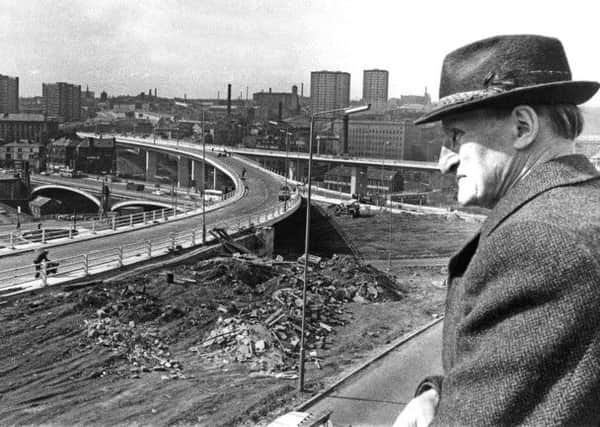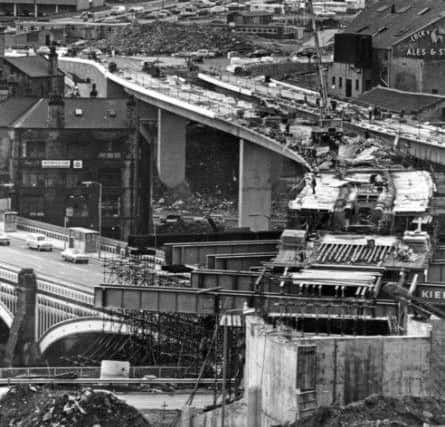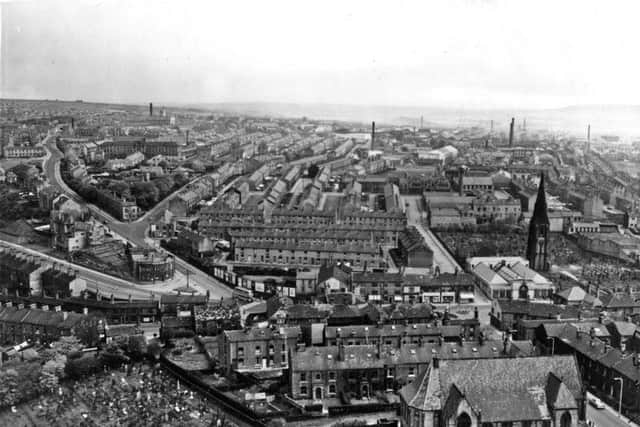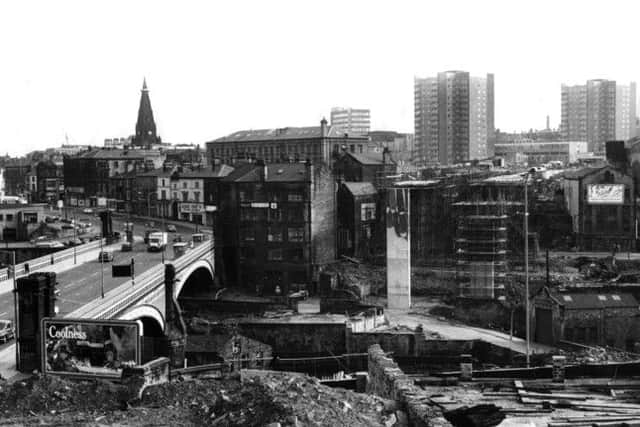How they drove the motorways through Yorkshire


To cope with this boom, a network of major motorways was constructed. Many cities and towns were also motivated to devise link road systems.
One man who saw the wisdom of building a road infrastructure to deal with high volumes of traffic passing through Halifax and to provide convenient links to the M62 was prominent town councillor John Burdock.
Advertisement
Hide AdAdvertisement
Hide AdDuring the early 1960s, he and like-minded people lobbied for a scheme to relieve the congestion caused by the A629 crossing the town from north to south and the A58 passing through east-west, both of which connected to the A647 heading to Bradford.


There was strong opposition, stating there was little space to extend a ring road around the town given its position close to the foothills of the Pennines. A bold decision had to be taken – a new thoroughfare would have to scythe through the town centre or the area would see gridlock.
At a meeting in 1964, the Press was told that council members were about to make the most important decision in the town’s history. Should they vote to destroy a fair proportion of the town centre and build a road? With John Burdock at the forefront of the campaign, they ultimately decided yes. Thereafter, scores of buildings, some historic, and a beauty spot to the south were swept from the map.
The plans presented a spectacular feat of engineering and included trenches, flyovers and enormous two-level viaducts. Burdock argued that the new inner relief road, as well as being a foretaste of the future, would be of great benefit to the town. Supporting his statement was a traffic census taken in 1966 showing 16, 500 vehicles had used Halifax’s North Bridge in one direction and 1,000 more in the opposite.
Advertisement
Hide AdAdvertisement
Hide AdThe Yorkshire Evening Post of October 28 1964 announced that a £3,000,000 scheme for an inner relief road at Halifax bridging the valley at North Bridge and passing underground for over 100 yards between Pellon Lane and Gibbet Street had been approved by the town council.


“When completed it will contain the town’s increasing traffic for 30 years with scope for extensions,” boasted Ald Burdock, highway committee chairman. The scheme was planned by consultants Husband & Company of Sheffield.
Stage 1 of the road, providing a bypass for A58 traffic and building the first phase of the viaducts across the valley started in 1970. When it was ready three years later there was a quiet ceremony, which was in stark contrast to the celebration seen 100 years earlier when the town’s 320ft bridge North Bridge was opened.
In October 1871 the official celebrations went anything but according to plan. It had been decided to give the people of Halifax a half day holiday so they could attend the opening, but there were not enough police on duty to control the sightseers. It was impossible to get complete silence for the speeches and arrangements to tell the artillery guns at Southowram Road when to fire broke down. They were fired prematurely while an archdeacon was offering prayers. The Mayor, H.C. McCrae, finally managed to announce that the bridge was officially open and he scurried back to the town hall where he hosted a banquet.
Advertisement
Hide AdAdvertisement
Hide AdBut booming guns and pealing church bells were definitely ruled out for Halifax’s 1973 new road opening. “We would probably be arrested for causing a commotion,” said Ald Burdock who was having the new road – Burdock Way – named after him.


On March 27 1973 he strolled along the new road as workmen continued with the finishing touches. Yet, like everyone else, Ald Burdock had to wait until April 6 to try out the first stage of Halifax’s new relief road as a motorist. On that day Burdock Way was to be opened by Mayor Maurice Jagger.
Halifax people had one chance only to inspect the road on foot, on the Sunday before the official opening, which took place on the following Friday.
Ald Burdock explained: “The highways committee decided it would only be fair to have a public walkabout to give the people a chance to see what they are paying for.”
Advertisement
Hide AdAdvertisement
Hide AdOn that Sunday some 60,000 Halifax residents walked over the length of the road from New Bank on the Leeds side of the town to King Cross Street.
Burdock Way has never been fully completed as it is missing certain sections envisaged in the early 1960s plans. There are a number of reasons for this, but it is mainly owing to West Yorkshire County Council’s cost cutting in the 1970s. Nevertheless, it continues to act as a relief road as well as a testament to ambitious and imaginative road planning.